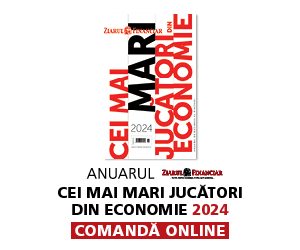The National Bank of Romania (NBR) Governor, Mugur Isarescu, yesterday hinted that the euro would replace the dollar as the benchmark currency for calculating the ROL exchange rate next year. However, the Romanian leu will remain the circulation currency until 2009-2010, at least.
The calculation of the ROL exchange rate against the euro will be one of the most important moves on the forex market next year.
At this time, the ROL/USD exchange rate is calculated based on the quotations applied by the commercial banks and posted on the trading screens at noon, then, depending on the euro/dollar parity on the international markets, the ROL's benchmark rate is set in relation to the euro.
"Bearing the European Union accession in mind, the monetary policy will focus on a realistic disinflation programme, on maintaining a relatively flexible exchange rate - the euro will most likely become the benchmark currency at the beginning of next year - and, last but not least, a rate cut in the long term," the NBR Governor Mugur Isarescu said yesterday.
The euro has gained significant ground in Romania's trade, therefore this move will allow the central bank to exert tighter control over the financial inflows. The single European currency has increased its share in the Romanian economy, but the NBR was not able to directly influence the ROL/EUR exchange rate. The central bank could only do it through the ROL/USD exchange rate.
This situation was most uncomfortable for the National Bank and became very clear this year when the euro posted a surprising evolution, knocking over all the early year calculations. Had the NBR been able to intervene on the forex market and buy/sell euros, things would have been much easier, considering the Romanian leu has lost almost 22% to the single European currency, while the dollar only gained 5%.
As a first stage before switching to the euro benchmark currency, the National Bank is gradually redirecting its foreign currency reserves from the US dollar to the euro. More than half of the currency reserves is now in euros.
However, dealers do not think this decision will bring significant changes. "This idea has been around for almost a year. As far as I remember, the basket comprising the two currencies, in different ratios, was there to precede the shift to the euro benchmark. There will not be many changes, as we will work with euro quotations, instead of dollars," says Cristian Sporis, a senior dealer with Raiffeisen Bank Romania.















































